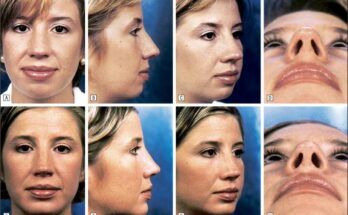Lack of physical activity, injury, and aging can affect the tissues surrounding the joints, leading to fatigue and limited movement. Flexibility allows your joints to move through a full range of motion without restriction. Stretches, yoga, and functional movements can improve your flexibility, strength, and performance. Here are six flexibility exercises to include in your routine:
Dynamic Stretches
Dynamic stretches are flexibility exercises that mimic actual workouts but are slow and controlled. They prepare your tissues and muscles for intense performance. You can include them in your warm-up routine to relax your muscles and reduce stiffness. Dynamic stretches include hip circles, squats, arm swings, and step-ups. Dynamic stretches activate your muscles, prevent injuries, and can improve performance.
Yoga
Yoga combines functional movements, breathing, and relaxation. Yoga emphasizes safety, attention, correct form, and mindfulness. It also helps you become more aware of your body movements. Poses like twists and side angles can improve brain coordination and muscle flexibility. Yoga also gives you more control over your movements, reducing the risk of injuries.
Hamstring Stretch
During intense exercises like running, dancing, or football, hamstrings can become tight and stiff. Contracted hamstrings can flatten the arch of your lower back, resulting in weakened back muscles. Hamstring stretches can reduce back pain, prevent injury, and improve flexibility. They can also improve mobility during intense athletic activities. You can stretch while seated or standing so long as you fully extend your hamstrings. You can also use resistance bands or towels for more intensity.
Piriformis Stretch
The piriformis is a superficial muscle of the gluteus region. The muscle helps with external rotation and abduction of the femur. When you sit for too long without exercise, the muscle pushes the sciatic nerve causing pain in the buttocks. Piriformis stretches can improve the flexibility of the gluteus muscles, reduce sciatic pain, alleviate back pain, and reduce the risk of injury. Ideal stretches include the downward dog, lunges, and heel drops.
Calf Stretch
Calf muscles are located at the back of the leg and extend from the knee to the ankle. They facilitate plantar flexion during walking, running, or jumping. When the calf muscles are injured, compensatory motions like toeing out or excess knee rotation can occur. These movements may lead to plantar fasciitis, injuries, and pain. Calf stretches can improve performance and flexibility by increasing your range of motion.
Explore More Flexibility Exercises
When you sit for too long or perform intense activities, your muscles may become injured or weak. This results in pain and stiffness, reducing athletic performance and everyday movement. Flexibility exercises can help relieve pain, increase your range of motion, and facilitate joint movements.
Read Also: How to Treat Gout in Your Foot and Ankle
Yoga can increase flexibility, strength, and mindfulness. Dynamic stretches prepare your muscles for intense workouts to reduce the risk of injuries. Muscle-specific stretches improve movement in that muscle and reduce overcompensation of other muscles and joints. A stretchologist can help you combine these exercises for optimal performance. Contact a local stretch studio to learn more about how to improve your flexibility.




